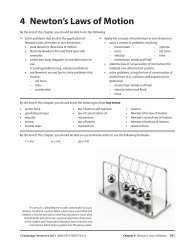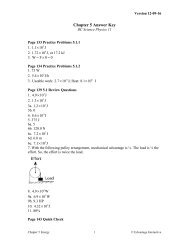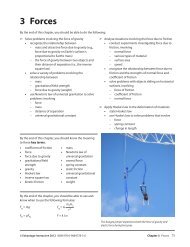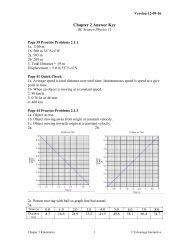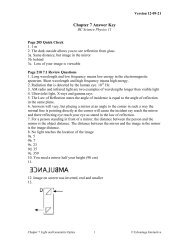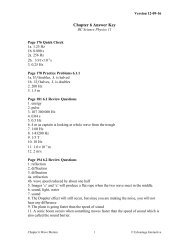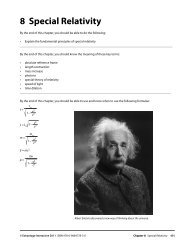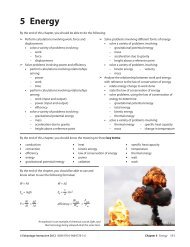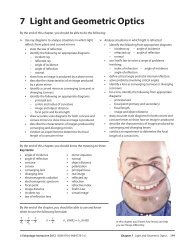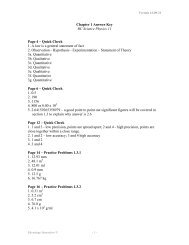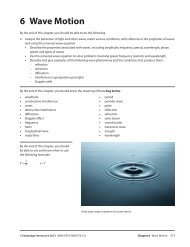2 Kinematics - BC Science Physics 11
2 Kinematics - BC Science Physics 11
2 Kinematics - BC Science Physics 11
You also want an ePaper? Increase the reach of your titles
YUMPU automatically turns print PDFs into web optimized ePapers that Google loves.
2.4 Acceleration of Bodies Due to Gravity<br />
Warm Up<br />
Take a piece of paper and book in each hand and raise them to about the height of your shoulder. Predict which<br />
one will hit the ground first if they are both dropped at the same time. Drop both and record results. Now<br />
crumple the same piece of paper and repeat. Describe and suggest reasons for any differences between the two<br />
events.<br />
Free Fall<br />
Figure 2.4.1 These sky divers are in free fall until they<br />
open their parachutes to slow their descent.<br />
One of the most common situations involving uniform acceleration is the phenomenon<br />
known as free fall. For example, if a coin drops out of your pocket, it accelerates toward<br />
the ground. If the effects of air resistance are ignored, the acceleration of the coin toward<br />
the ground is uniform. The coin starts its downward fall with zero speed, but gains<br />
speed as it falls toward Earth. Since gravity is the cause of the acceleration, we call the<br />
acceleration during free fall the acceleration of gravity. The acceleration of gravity is<br />
given a special symbol, g.<br />
The magnitude of g depends on your location. At Earth’s<br />
surface, g is approximately 9.81 m/s 2 . At higher altitudes,<br />
g decreases. For our present purposes, g is assumed to be<br />
constant at Earth’s surface and to be 9.81 m/s 2 . On the Moon,<br />
the magnitude of g is approximately 1/6 of what it is here on<br />
Earth’s surface. A body in free fall near the Moon’s surface has<br />
an acceleration of gravity of only 1.60 m/s 2 .<br />
Of course, the four equations for uniform acceleration<br />
apply to free fall as well as other uniform acceleration<br />
situations. The symbol g may be substituted for a in those<br />
equations.<br />
64 Chapter 2 <strong>Kinematics</strong> © Edvantage Interactive 2012 ISBN 978-0-9864778-3-6



